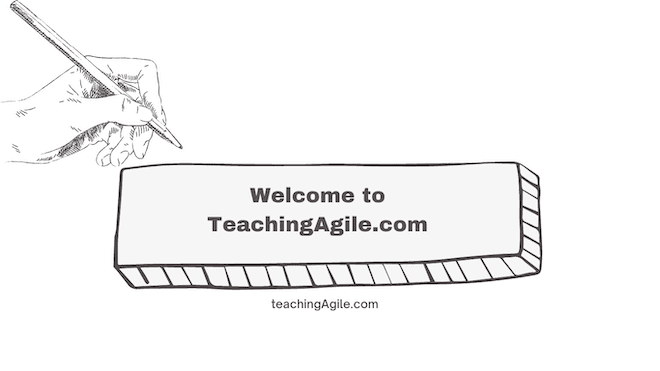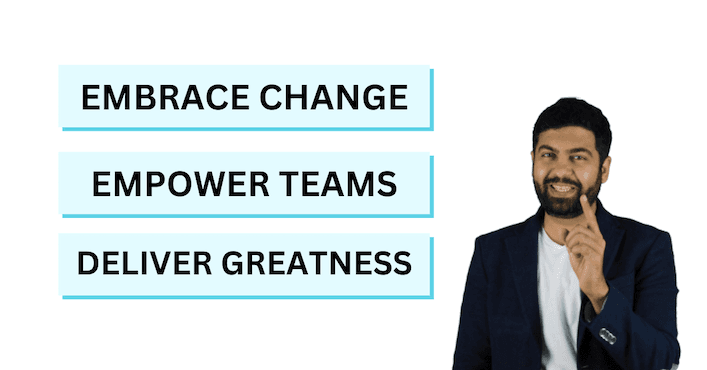
Master Agile Frameworks: Learn Modern Software Development
 Welcome to TeachingAgile.com
Welcome to TeachingAgile.com
Agile has transformed how teams build software - from startups to Fortune 500 companies. Whether you're preparing for PSM-1 certification, leading your first Sprint, or scaling Agile across your organization, you're in the right place.
What You'll Master Here
Popular Frameworks: Deep-dive into Scrum, Kanban, Extreme Programming (XP), SAFe, and more
Framework Comparisons: Scrum vs Kanban, Waterfall vs Agile, and detailed model comparisons
Certification Prep: Comprehensive PSM-1 preparation with quizzes, practice questions, and exam strategies
Practical Guides: User stories, estimation techniques, Definition of Done, and implementation patterns
SDLC Models: Complete coverage of Waterfall, Iterative, V-Model, and hybrid approaches
Quick Navigation
| Framework | Best For | Start Here |
|---|---|---|
| Scrum | Product teams, iterative development | Scrum Overview |
| Kanban | Operations, continuous flow | Kanban Introduction |
| XP | Technical excellence, pair programming | XP Overview |
| Comparisons | Choosing the right approach | Framework Comparisons |
Table Of Contents-
Agile Methodology: The Foundation
Agile methodology revolutionized software development by replacing rigid, sequential processes with flexible, iterative cycles that prioritize:
- Customer collaboration over contract negotiation
- Working software over comprehensive documentation
- Responding to change over following a plan
- Individuals and interactions over processes and tools
Why Agile Matters
For Teams: Improved collaboration, faster feedback loops, reduced waste, and higher job satisfaction
For Organizations: Faster time-to-market, better product-market fit, reduced risk, and higher ROI
For Customers: Regular deliveries, continuous feedback opportunities, and products that truly meet their needs
All Agile frameworks share common goals—optimizing the triple constraints (scope, time, cost) while maximizing quality and transparency. The difference lies in how each framework achieves these goals.
Scrum: The World's Most Popular Agile Framework
Scrum is the most widely-adopted Agile framework, used by 66% of Agile teams worldwide. It structures work into fixed-length Sprints (1-4 weeks), producing a potentially shippable Increment each Sprint.
Core Elements:
- 3 Roles: Product Owner (maximizes value), Scrum Master (ensures Scrum is understood), Developers (create Increment)
- 5 Events: Sprint Planning, Daily Scrum, Sprint Review, Sprint Retrospective, and the Sprint itself
- 3 Artifacts: Product Backlog, Sprint Backlog, Increment
Best for: Complex product development, cross-functional teams, and projects requiring regular stakeholder feedback
Learn more: Complete Scrum Guide | PSM-1 Certification Prep
Kanban: Visualize, Limit, and Optimize Flow
Kanban optimizes workflow through visual management and explicit WIP limits. Born in Toyota's manufacturing plants, it's now the go-to framework for operations, support, and continuous delivery teams.
Core Principles:
- Visualize workflow on a Kanban board (To Do → In Progress → Done)
- Limit WIP to prevent overload and identify bottlenecks
- Manage flow by tracking lead time and cycle time
- Continuous improvement through metrics and feedback loops
vs Scrum: No Sprints, no prescribed roles, no commitments - just continuous flow. See full comparison
Best for: Support teams, DevOps, maintenance work, and teams needing maximum flexibility
Learn more: Kanban Deep Dive | WIP Limits Guide
Extreme Programming (XP): Technical Excellence First
Extreme Programming (XP) takes Agile engineering practices to the extreme, prioritizing technical excellence and code quality above all else.
Key Practices:
- Pair Programming - Two developers, one workstation, higher quality code
- Test-Driven Development (TDD) - Write tests before code
- Continuous Integration - Integrate code multiple times daily
- Refactoring - Continuously improve code structure
- Simple Design - Build the simplest thing that works
Best for: Development teams focused on code quality, fast-changing requirements, and technical debt reduction
Learn more: XP Overview
SAFe: Scaling Agile to the Enterprise
Scaled Agile Framework (SAFe) brings Agile principles to large organizations with multiple teams working on complex products. It combines Scrum, Kanban, XP, and Lean into a cohesive enterprise framework.
Best for: Large organizations (50+ people), coordinated releases, portfolio management, and enterprise transformation
Other Agile Frameworks
Feature-Driven Development (FDD) - Model-driven approach focusing on feature-by-feature delivery with 2-week iterations
DSDM - Time-boxed delivery with MoSCoW prioritization (Must have, Should have, Could have, Won't have)
Lean Software Development - Eliminate waste, amplify learning, deliver fast using Toyota Production System principles
Crystal - Family of methodologies (Clear, Yellow, Orange, Red) scaled to project size, emphasizing people over processes
 Embrace change, empower
teams, and deliver greatness.
Embrace change, empower
teams, and deliver greatness.
Start Your Agile Journey
Whether you're a developer learning Scrum, a product manager comparing frameworks, or a leader transforming your organization, this comprehensive resource provides everything you need to succeed with Agile.
Popular Starting Points:
- New to Agile? Start with Agile Overview and Agile Values
- Choosing a framework? Read Scrum vs Kanban or Waterfall vs Agile
- Preparing for certification? Explore PSM-1 Exam Guide
- Implementation help? Check User Story Guide and Definition of Done
The future belongs to teams that can adapt, collaborate, and deliver value continuously. Welcome to your Agile transformation.
Continue Reading
An Agile ExampleDiscover how a financial services company successfully transformed its software development process by implementing Agile methodology, resulting in improved customer satisfaction and team dynamics.
Agile Certifications: A Comprehensive Guide to Boost Your CareerDiscover the various Agile certifications and how they can help you advance your career. Compare the benefits, drawbacks, and the triple constraint in this detailed guide
Learn about Scrum and PSM-1 CertificationLearn about the PSM-1™ Certification for Scrum, its importance, and how to prepare for the exam to boost your Scrum Master career.
Learn about Software Development Life Cycle (SDLC)Get an overview of the Software Development Life Cycle (SDLC), and learn about the key phases and activities involved.
Agile vs. WaterfallDiscover the differences between Agile and Waterfall methodologies in project management, and learn how to choose the best approach for your projects.
Effective Requirements Gathering: Techniques and TipsDiscover effective strategies for business analysts to master requirements gathering, ensuring projects are built on clear, actionable requirements.
Frequently Asked Questions (FAQs) / People Also Ask (PAA)
Which principles are considered most crucial in Agile methodology?
For beginners in Agile methodology, which certification is recommended as the best starting point?
What reasons make Agile a better choice than the Waterfall methodology?
Under what circumstances might Agile methodology not be the most effective approach?
What is the origin of the Agile methodology?
What is the role and responsibility of an Agile coach?
Are the terms 'Agile' and 'Scrum' interchangeable, or do they represent different concepts?